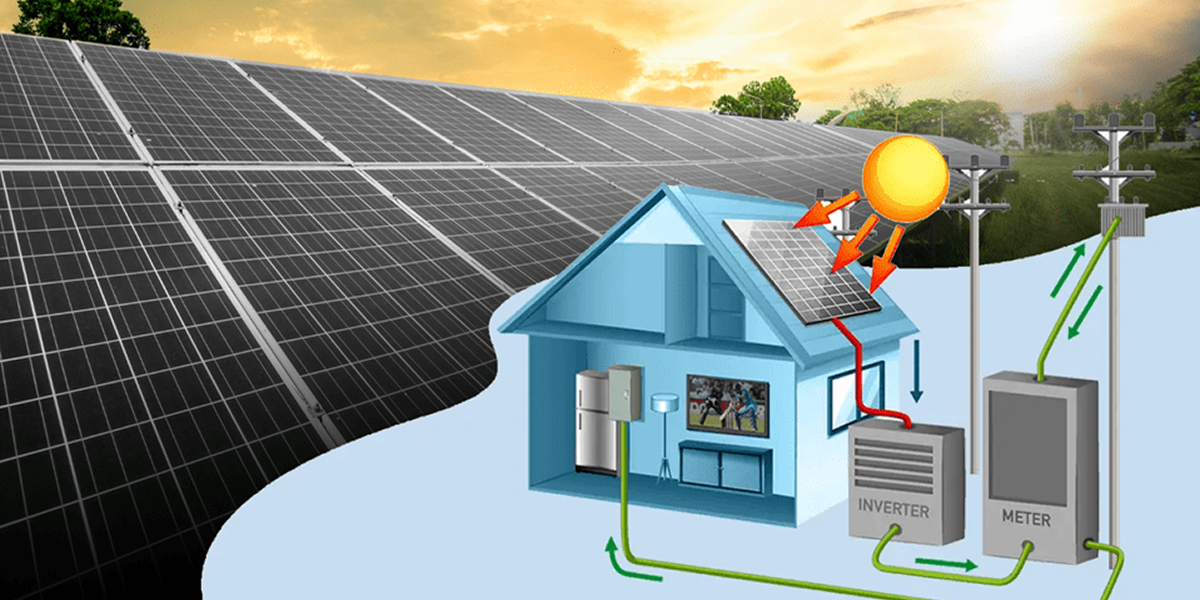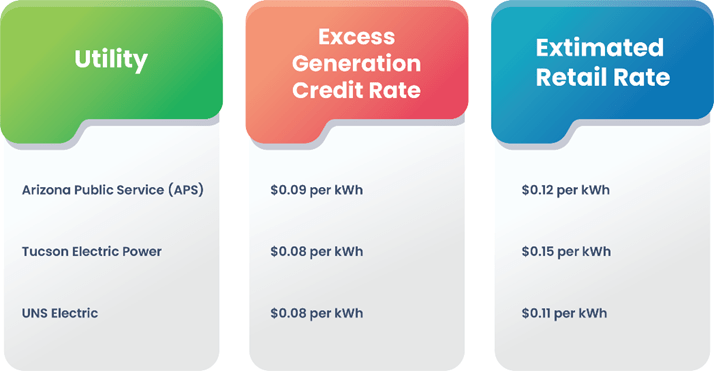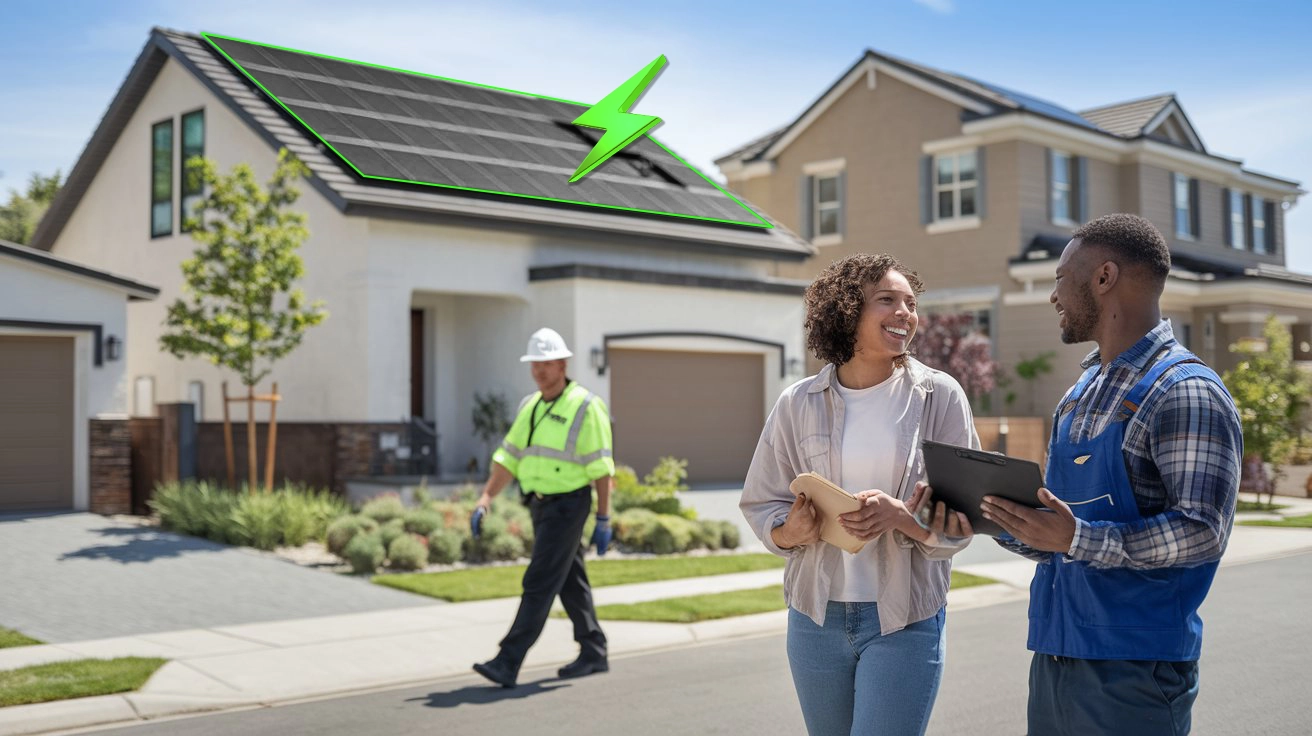- Published On:
Solar Net Billing in Arizona: Everything You Need to Know
To encourage homeowners and businesses to switch to clean solar energy, solar incentives in Arizona are available to support people. Arizona is among the best states for solar as it is one of the sunniest states in the U.S. All state and local rebates are to support people by offsetting the high upfront cost of solar installation. Solar net billing in Arizona is also a compensation program for solar owners who transfer the excess solar energy to the grid. When your solar panels in Arizona overproduce power on sunny days, you can earn credits from your utility by flowing extra power to the grid.

In this article, we will take you through the ins and outs of net billing in Arizona so you can make informed decisions regarding the energy demands of your house.
Net metering vs. Net billing: What is the difference?
Net billing is not the same as net metering. The distinction between the two programs is what participants will get to send excess electricity from their solar panels to the grid. Net metering credits typically match the retail electricity rate, which is the amount you, as a utility customer, pay for power. On the other hand, the wholesale rate (the amount your utility company pays for electricity) is equivalent to net billing credits.
Solar Net Billing in Arizona: How does it work?
Utilities buy extra solar energy for an “excess generation credit rate” under net billing in Arizona. This rate is less than the retail value of energy. If you pay your utility $0.08 for each KWs, the utility may only compensate you $0.05/KWs if you sell them excess energy. Furthermore, don’t count on receiving a cheque from your utility company for the extra electricity you provide them. Rather, you will receive credits on your electricity bill, which you can apply toward partially offsetting your later electricity expenses.
What are the excess generation credit rates of different utilities in Arizona?
Regardless of your utility, the excess generation credit rate is always less than the full retail price of power. However, Fortunately, the excess credit rate only drops by 10% annually despite updates. So, once you install your panels, you won’t have to worry about the value of your rate dropping because you will get the same extra generation rate for 10 years. Following are the net billing rates of utilities in Arizona:

What is instantaneous netting?
With the instantaneous netting approach, the utility will calculate how much energy you generate and consume during a limited time, such as an hour, and compare the two. During that time, the extra solar energy will get credited at the excess generation rate.
Furthermore, credits are typically netted on a monthly or annual basis. The utility will calculate how much electricity you produce and how much you utilize over the course of a month when you use monthly netting. This implies that any excess solar energy you generate on Monday afternoon might offset the whole cost of the electricity you purchased on Thursday evening from the grid. At the end of each month, you will get credit at the excess generation rate if you have any remaining solar credits.
However, instantaneous netting will reduce your solar savings because the net billing credits cannot even fully cover the price of electricity usage later in the same day, let alone late in the week or month.
What is the solar net billing battle in Arizona?
The governing organization with the authority to accept and modify Arizona’s net billing policy is the ACC. Commissioner Nick Myers asked for a 37% drop to RCP in August 2023, which was much higher than the 10% cap. The proposal was rejected 4-1, and the ACC decided to reduce RCP by 10%.
Later, The ACC decided to set up a new docket on October 11, 2023, which will look into the RCP’s 10% yearly cap and the 10-year lock-in period. The original plan was to revisit the 2017 net billing decisions and discuss potential modifications to the grandfathering rule, as stated in the agenda for the open meeting. But, at the start of the meeting, Myers withdrew his request to discuss grandfathering, and the ACC ultimately opted not to reconsider the entire 2017 ruling but to create a new docket specifically focused on the cap and lock-in period, instead of reopening the entire 2017 decision.
Even, in August 2023, Myers proposed a 37% reduction in the RCP to 5.3 cents per kWh, claiming the common “cost shift” strategy that has been employed in some states to undermine and eliminate net metering laws. According to the cost shift argument, solar owners raise the cost of grid electricity for non-solar owners by paying very little in utility electricity rates. However, the cost shift argument is flawed since it has been rejected by many state studies and, in this instance, by information from the largest utility in Arizona. On November 1, the ACC will hold a procedural conference to schedule and method of the net billing change hearings.
How can you save with solar in Arizona?
Although solar net billing may not help you save much on your solar investment, combining your solar system with battery storage can do more.
With solar+battery, you can transfer the energy to your battery rather than delivering your excess solar energy to the utility. You can then use the battery energy rather than the grid power when your solar panels aren’t generating enough electricity to meet your needs. As a result, every kWh of solar energy you generate will effectively have its full retail value.
Is it worth it to go solar in Arizona?
Solar energy is still a wise investment in Arizona, even though net billing doesn’t allow you to save as much as net metering does. Also, the solar savings are still great due to the 30% federal tax credit and other solar incentives in Arizona.
However, keep in mind that Arizona’s utilities reduce their excess generation credit rate on an annual basis. You should switch to solar power as soon as possible if you want to optimize your savings, as such savings will decrease over the next year.
So, get a FREE estimate of your potential solar savings and get in touch with a certified solar installer like Solar SME for switching to solar.
Related Articles:
Arizona is the sunniest state overall in the country, and residents get over 300 days of sunshine every year. Also, the federal solar tax credit and Arizona solar incentives help to minimize the upfront cost of a solar system. Explore best solar programs in Arizona!
With the rise in inflation and frequent power outages, solar with battery backup are popular for reducing energy costs by up to 95%. But, for many people, it is still challenging to manage the significant initial expenses. Learn how solar programs help!
Are you thinking about going solar in Arizona? With SunWatts Renewable Energy Rebate Program, you can cut off solar installation costs and start your journey towards savings instantly. Explore the program details including eligibility and benefits!



